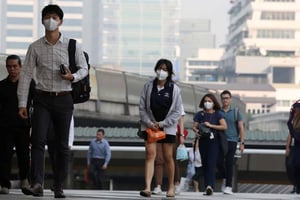The well-known British newspaper “The Guardian” has redefined the vocabulary that is to be used by its journalists and editors when writing about climate matters. Its editor-in-chief, Katharine Viner, explained, “We want to ensure that we are being scientifically precise, while also communicating clearly with readers on this very important issue”. But what exactly are these language changes?
The most important change refers to the term “climate change”, where expressions such as “climate emergency” or “climate crisis”, which more accurately reflect the seriousness of the overall situation, are to be used in its place. The use of the term “climate breakdown” is also recommended for the most dramatic consequences, such as the increase in the intensity of floods and hurricanes.
People that deny that climate change is happening or that it is caused by human activity, despite overwhelming scientific evidence, are to be defined as “deniers” and no longer as “sceptics”. Furthermore, in order to offer the reader a more scientifically-accurate description, it is better to speak of “global heating” and not of “global warming”, and in order to be clearer, better to replace “carbon dioxide emissions” with “greenhouse gas emissions”.
As “The Guardian” sees it, even the images it publishes must accurately and appropriately convey the climate crisis we are facing, bearing in mind that “images that define climate change shape the way it is understood and acted upon”.
We all know that people love polar bears and pandas, and therefore these appealing creatures have become a sort of emblem for endangered species. The images of these animals tell a certain story about the climate crisis, but they can give the impression that these issues are remote and abstract, a problem that is not a human one, nor one that is particularly urgent.
On the other hand, according to Viner, “People need reminding that the climate crisis is no longer a future problem – we need to tackle it now, and every day matters.”
And so the path to be followed is a different one: we need to show the direct impact of environmental issues on people’s daily lives and to try to indicate the real scale of
this impact. The decision, starting from this year, to report the increase in global carbon dioxide levels in The Guardian weather pages – the simplest measure of how the mass burning of fossil fuels is disrupting the stable climate – is a further step in this direction.
It cannot be denied that many of the aspects that are most representative of the escalating crisis faced by our planet, like the impact on communities, biodiversity, agriculture, water and food supply, are much more difficult to describe, even visually.
We therefore need new words and new imagery for new narratives.

